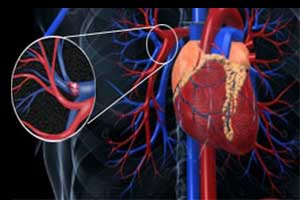CHEST releases new guidelines for antithrombotic therapy for VTE disease
The American College of Chest Physicians (CHEST) recently released new clinical guidelines for venous thromboembolism (VTE) management, “Antithrombotic Therapy for VTE Disease: Second Update of the CHEST Guideline and Expert Panel,” that provides 29 recommendations on 17 Patients, Interventions, Comparators, Outcomes (PICO) questions, four of which have not been addressed previously.
This is the second update to the ninth edition of these guidelines. The last full edition of the guideline, “Antithrombotic Therapy and Prevention of Thrombosis 9th ed: American College of Chest Physicians Evidence-Based Clinical Practice Guidelines,” or “AT9,” was published in 2012 and was last updated in 2016. This guideline is the first addressing this topic and will be regularly updated as new evidence emerges according to the Living Guidelines Model of the American College of Chest Physicians.
Within the updated recommendations, the panel generated 29 guidance statements, 13 of which are graded as strong recommendations. These include:
In patients with acute isolated distal deep vein thrombosis (DVT) of the leg who are managed with anticoagulation, we recommend using the same anticoagulant regimen as for patients with acute proximal DVT.
In patients with cerebral venous sinus thrombosis, we recommend anticoagulation therapy for at least the treatment phase (first 3 months) over no anticoagulant therapy.
In patients with acute DVT of the leg, we recommend against the use of an inferior vena cava (IVC) filter in addition to anticoagulants.
In patients with thrombosis and antiphospholipid syndrome being treated with anticoagulant therapy, we suggest adjusted-dose vitamin K antagonists over direct oral anticoagulant therapy.
“These guidelines help to clarify for providers the intricacies of managing patients with VTE,” says member of the expert panel, Scott C. Woller, MD, FCCP. “Serving as a comprehensive reference for any stage, the recommendations cover aspects from initial management through secondary prevention and risk reduction of post-thrombotic syndrome.”
The order of presentation of the PICOs and guidance statements in the manuscript are intended to follow the chronology of VTE management:
Whether to treat
Interventional and adjunctive treatments
Initiation phase
Treatment phase
Extended phase
Complications of VTE
The guidance statements are intended primarily for clinicians who manage patients with VTE but may inform researchers in selecting questions for future studies. Patients and policy makers may also be informed by the guideline content.
Source: Elsevier
Full bibliographic information
“Antithrombotic Therapy for VTE Disease: Second Update of the CHEST Guideline and Expert Panel Report,” by Scott M. Stevens, MD, Scott C. Woller, MD, Lisa Baumann Kreuziger, MD, Henri Bounameaux, MD, Kevin Doerschug, MD, Geert-Jan Geersing, MD, PhD, Menno V. Huisman, MD, Clive Kearon, MD, PhD, Christopher S. King, MD, Andrew J. Knighton, PhD, Erica Lake, MLS, Susan Murin, MD, Janine R.E. Vintch, MD, Philip S. Wells, MD, and Lisa K. Moores, MD (https://doi.org/10.1016/j.chest.2021.07.056). The article appears online in the journal CHEST®, published by Elsevier.





